The beginning of a new year is an ideal time to do a card spread using The Tarot or any type of divination deck. The Wild Unknown Archetypes (HarperCollins, 2019) is Kim Krans’s latest divination deck and it came my way in time to do a card spread following Winter Solstice on the day before the New Moon on December 25th.
I can see all sorts of applications for The Wild Unknown Archetype Deck including asking questions regarding specific projects or situations as well as consulting the cards in the midst of writing a poem or another piece of writing i.e. choosing one card. A whole new window will open up and perhaps a new character or guide will appear: The Poet, The Shapeshifter or The Comic (from among The Selves in the deck).
Kim Krans illustrated the revelatory power of archetypes in her latest deck of cards with her line drawings, watercolour paintings, and collage. The oracle cards are round and are divided into four suits: The Selves, the Places, The Tools, and The Initiations. They come in a round box with a ribbon for lifting them out. A square box, decorated within and without, holds the cards and Guidebook. A beautiful presentation.
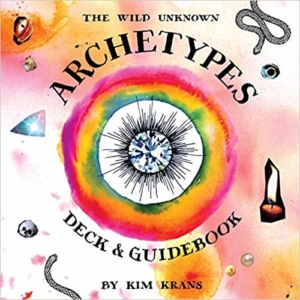 The Guidebook that comes with the oracle deck includes an introduction by Kim Krans about her graduate studies with a Jungian approach to creativity in southern California. Many of the images on the cards were formed “as much by The Ocean at they were by me,” she says. “In many ways I do not feel like I made this deck. It made me. It put me back together, one salty droplet at a time.”
The Guidebook that comes with the oracle deck includes an introduction by Kim Krans about her graduate studies with a Jungian approach to creativity in southern California. Many of the images on the cards were formed “as much by The Ocean at they were by me,” she says. “In many ways I do not feel like I made this deck. It made me. It put me back together, one salty droplet at a time.”
Carl Jung developed and integrated the concept of archetypes into the world of psychology and healing and “even he was perplexed by the notion of their source. When did they begin? From what source do they originate? What are their intentions?” Enchanted by these “unanswerable questions,” Jung devoted his life’s work to studying archetypes “within his patients, himself, and the world.”
Kim says that archetypes are patterns, universal, timeless, infinite, contain both light and dark, and use image in various ways (song, word, memory, poem, dream, painting, story, nature, another person for example). The intentions of archetypes are to “move us from the literal to the mythic. They do this by getting us our of our heads and into the space of dreams, emotions, and imagination.” In fact, Kim says, they “insist on the imagination” and “they insist on multiplicity.”
The archetypes “prefer potentials over answers, collaboration over convention, dynamism over singularity, and inclusion over rejection. In this way they challenge us to expand our sense of self to include what we had previously rejected. . . Archetypes throw the wildest of dinner parties, and everyone is invited.”
The Inner Quest four-card spread is the first one I did. It was the inspiration for the entire deck Kim says. I’ve found that Tarot or divination cards offer an opportunity for reflection and affirmation as well as insight into what’s possible. This new deck was no exception.
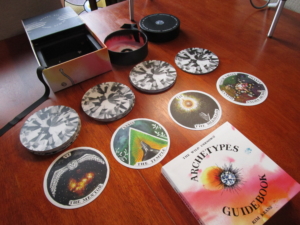 The Inner Quest spread is easy to do when you first get the deck as the cards are already divided into their four suits of The Selves, The Places, The Tools and The Initiations. Kim has a couple of suggestions for questions to ask and I went with this one: What is the current story of my life?
The Inner Quest spread is easy to do when you first get the deck as the cards are already divided into their four suits of The Selves, The Places, The Tools and The Initiations. Kim has a couple of suggestions for questions to ask and I went with this one: What is the current story of my life?
Card 1: Who (from The Selves)
This is the part that needs attention in order to understand and move forward in my quest.
I chose VI The Mentor (also known as the Teacher, the Sage, the Guru). Or perhaps it chose me.
“It is said that cosmic knowledge pours down on the world like a great illuminated waterfall. This can be an overwhelming force. The true teacher, though, is said to be able to hold this flow of wisdom at bay while the student sips from a focused stream. The Mentor archetype has a gift for reading the room, for sensing the exact ingredient that will stimulate growth within this student (whether pleasant or painful).
I call myself a “writing mentor” and share what I do and what I’ve learned about the process of writing. I’m always reading and checking out various resources and from those I share excerpts or poems as inspiration for others’ writing. “A focused stream” from which a student can sip sounds like a good intent. “Reading the room” is honed through practice and can happen in a one-on-one situation when an inkling will prompt a response. It’s a type of improv based on intuition. That works in a writing circle too with an outline on a theme planned in advance and which can change in the moment depending on the needs of the circle members at a particular moment.
Some of us have dreams of being in front of an audience and we’ve forgotten our notes for the presentation we’re about to give. Or forgotten the poems we planned read. I think of people who have given talks without notes and I aspire to do the same. There are subjects close to my heart and I’m sure I could do it! It wouldn’t be completely improvised as I’d be talking about the value of being seen and heard in a circle or writing as a spiritual practice. I think of Jean Shinoda Bolen talking about circles some years ago when she was a keynote speaker at a labyrinth festival in Parksville, B.C. I so admired her ability to give her presentation without notes.
Card 2: Where (from The Places)
This is the energy that surrounds the situation – the stage or backdrop that influences the story.
I chose XXXIX The Temple
A temple doesn’t have to be an architectural structure as the author points out. “Visiting the temple might be as simple as stepping into the dappled light of The Forest, slowly and sensuously kissing a lover, or closing your eyes to travel inward. This card is a call to re-examine what you pay homage to and what you reject. What do you spend your time worshipping (your phone, money, material goods)? . . . Perhaps there is room on your altar for something new, something surprising. Offer it to the heavens.”
One of the side notes says this card is interwoven with The Pilgrim archetype. That’s something an astrologer saw in my chart some years ago. I told Blain Bovee that indeed I had been on two goddess pilgrimages and considered writing a pilgrimage as well. One of my writing programs is called Remembering the Goddess: Mapping Your Spiritual Journey.
The body is also a temple Kim notes. Something I’ve been paying more attention to these days as the sedentary life of a writer has caught up with me. Now I’m lifting weights (in the form of jam jars) in the kitchen. When I think of poets who have written about the body, Sharon Olds comes to mind. A few years ago, she published a book entitled Odes in praise of everyday aspects of the body. As John Freeman said of Sharon in an interview with her: “Olds might be the first who moved the seat of the soul to the cervix.”
At the bottom of each page of the The Wild Unknown Archetypes Guidebook is a suggestion to “go deeper” and a poem by Hafiz is mentioned with the description of The Temple: “Now is the Time.”
I looked up the poem in my copy of A Year with Hafiz: Daily Contemplations by Daniel Ladinsky (Penguin Books, 2011). A wonderful poem to begin the year with I think. Here it is:
Now is the time to know that all you do is
sacred.
Now, why not consider a lasting truce with
yourself and God?
Now is the time to understand that all your
ideas of right and wrong were just
a child’s training wheels, to be laid aside when
you could finally live with veracity and courage.
Hafiz is a divine envoy whom the Beloved has
written a holy message upon.
My dear, please tell me, why do you still throw
sticks at your heart and Him?
What is it in that sweet voice inside that incites
you to fear?
Now is the time for the world to know that every
thought and action is sacred.
This is the time for you to deeply compute the
impossibility that there is anything but Grace.
Now is the season to know that everything we
do . . . . is sacred.
Card 3: With What (from The Tools)
The key to the situation or best tool for the task at hand.
I chose LIX The Medallion
“When The Medallion card appears, be aware of how the objects you hold dear may be embedded with unconscious energy or expectations. Materials hold consciousness, and it’s time to reconcile the vibration of the objects around you. What do you covet and collect? Why? Is there an object you have held on to for years that you are ready to release? Perhaps it is time to reach for the medallion that aligns with your deepest values.”
Symbols I am attracted to include the mermaid, the hand, the eye (as in the eye to ward off the “evil eye”), goddess images. I’ve been releasing things lately as they were part of my distant past. Not the symbols mentioned (although I did pass along my large mermaid collection some years ago) but jewellery items, paintings, and ceramics. Beautiful though they were, they were embedded with energy of other lives lived – past tense.
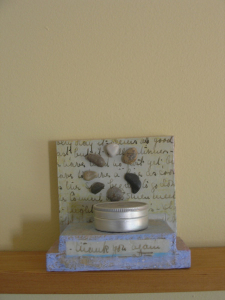 My friend Andrea Bird created this little altar for me when we gave a women’s retreat some years ago – maybe as many as fifteen. She has used encaustic (bees’ wax) to adhere parts of a handwritten letter to the wood and written these words in a circle under the small container of pussy willows:
My friend Andrea Bird created this little altar for me when we gave a women’s retreat some years ago – maybe as many as fifteen. She has used encaustic (bees’ wax) to adhere parts of a handwritten letter to the wood and written these words in a circle under the small container of pussy willows:
Thank you . . . Mary Ann, You make magic in the circle.
You are an alchemist, taking us deeper in such a gentle way.
This is your gift . . . .
I would say this “medallion” aligns with my deepest values.
Card 4: Why (from the Initiations)
The deeper purpose of your journey. This is what my entire journey is “about.”
I chose LXXVIII Anima Mundi.
“Anima Mundi epitomizes the principle ‘Accept all. Reject none.’ Simply put, it is the living soul of the world in all its multifaceted, multidimensional layers, bonded together by loving cosmic forces. Diversity is celebrated, multiplicity is honored, and nothing is denied embrace.”
In an additional note: “Anima Mundi is the energy behind the World card in the traditional tarot deck. Both carry themes of universal unity, completeness, and embrace.”
“Nothing is denied embrace” is something to remember as we acknowledge the “dark guests” as Toka-Pa Turner has referred to the various aspects of ourselves. And when considering a comment on social media, I stop myself. Answers are not clearly yes or no, this side or that side. There are multiple sides to every story and situation.
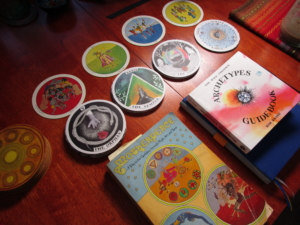 Kim Krans suggests using other card decks when doing card spreads and I got out my Motherpeace Tarot which was published in 1983. I’ve noted the date I purchased it, inside the front cover, as 1991. The cards in the Motherpeace deck created by Vicki Noble are also round – also published by Harpercollins as it turns out. Vicki Noble and Karen Vogel were the joint creators of the images on the cards.
Kim Krans suggests using other card decks when doing card spreads and I got out my Motherpeace Tarot which was published in 1983. I’ve noted the date I purchased it, inside the front cover, as 1991. The cards in the Motherpeace deck created by Vicki Noble are also round – also published by Harpercollins as it turns out. Vicki Noble and Karen Vogel were the joint creators of the images on the cards.
I asked the question: What do I need to be aware of to support my writing life?
The first card to come up for “Who” was from The Selves: V The Orphan. “Ask the orphan what it wants to say” is the question with that card. The Motherpeace card to come up was Five of Wands. Fives in the Tarot are about struggle. “In conflict each voice must be heard, each point of view expressed.”
It’s something to remember as I write, that the opposing views in myself are something to be explored. And yes, “Ask the orphan what she wants to say.”
I won’t describe every card that came up in that particular spread for me but will say that the Motherpeace Tarot was one of the ways I learned about goddess spirituality. The prologue to the book begins: “Patriarchy has brought us no peace.” There are line drawings of various goddesses including the Venus of Willendorf (Austria ca. 20,000 B.C.), Venus of Lespugne (France, ca. 15,000 B.C.), a bird-headed priestess figure with arms raised (pre-dynastic Egypt, before 3,000 B.C.) and a clay bird-headed female figure holding her breasts (Cyprus, 2,500 B.C.)
I would go on, after 1991, to visit ancient sites in Crete and Anatolia and see various images of goddesses as part of peaceful, earth-based cultures in which women and Nature were revered. Places where everyday objects were decorated with symbols from Nature and everyday life.
A reproduction carving of Artemis sits with some other goddess images on top of my book shelves. I could consider her an “archetype” of a woman’s need and right to carve her own path, and find her own independence even within the guidelines of commitment to another. While looking at her I remember gathering with other women at sacred sites and singing:
“We all come from the Goddess,
and to her we shall return,
like a drop of rain . . . “

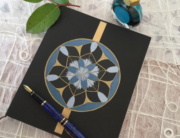
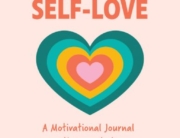
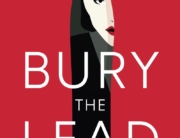
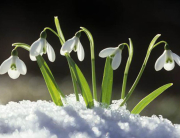
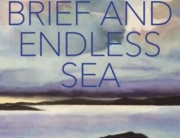
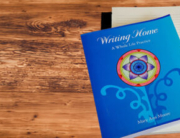
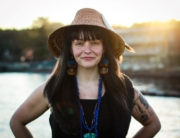
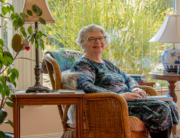
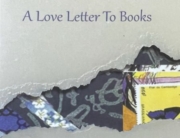

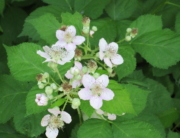
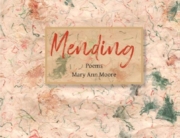
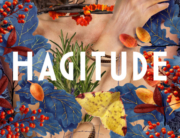
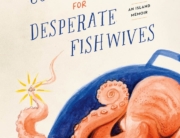
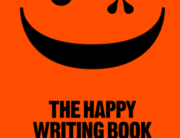

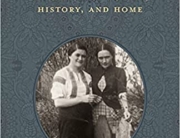
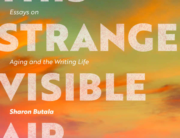

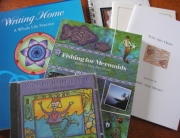
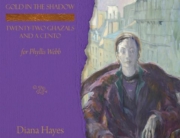
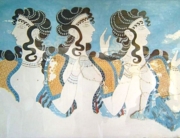

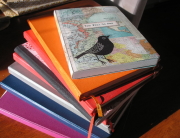
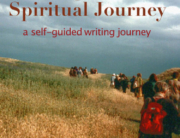
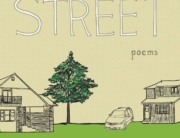
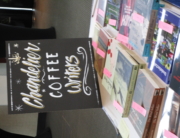
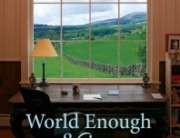
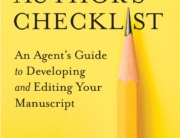
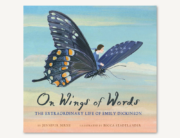
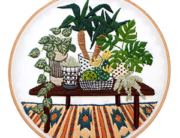
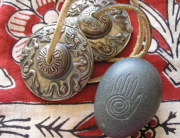
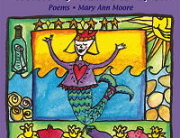
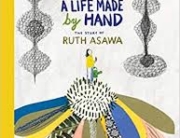
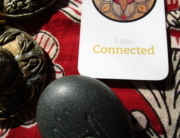
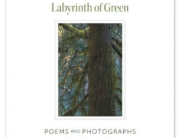
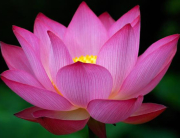
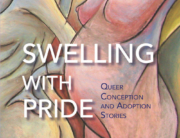
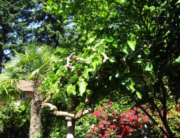
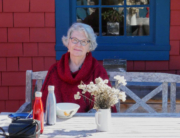

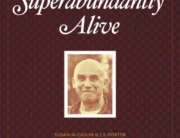
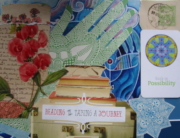
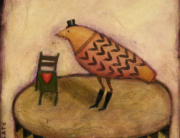


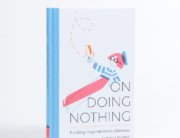
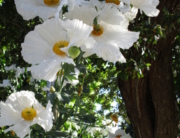
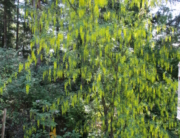
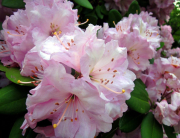
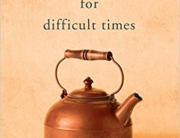
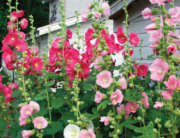
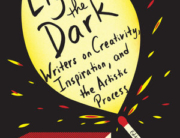
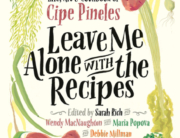
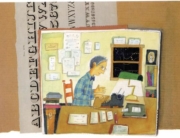
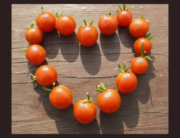

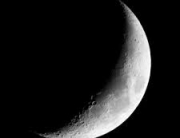

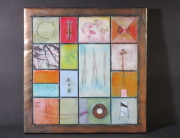
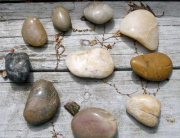
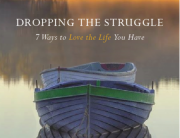

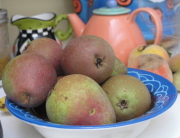
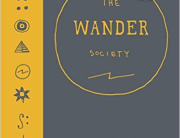
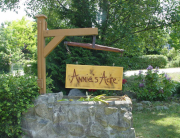

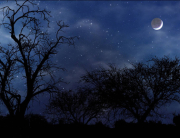
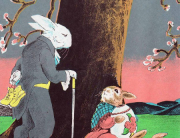

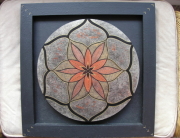
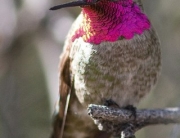
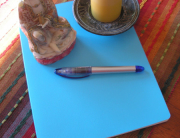

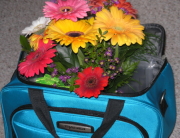
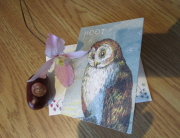
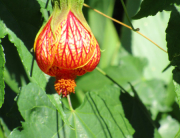
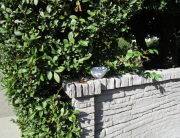
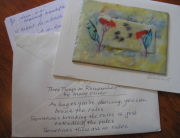

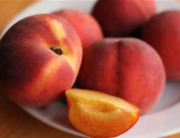
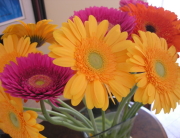
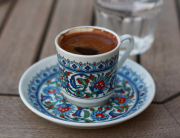
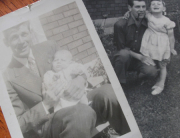
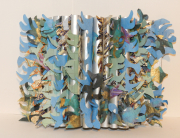


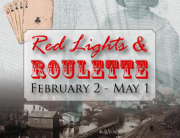
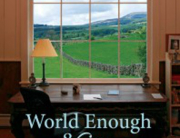
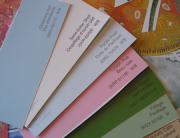
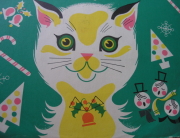

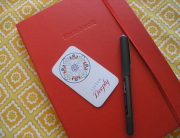
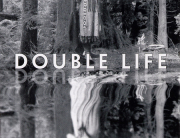

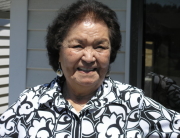
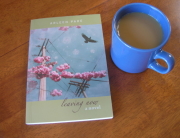
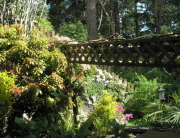
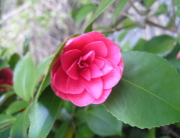

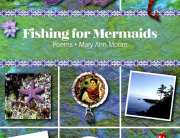
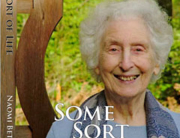
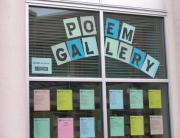
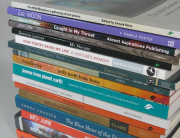

A marvelous introduction to a very interesting and expansive divinatory resource, Mary Ann. Thank you for sharing your personal use of the cards and the way you integrated it with the Mother Peace deck as well.